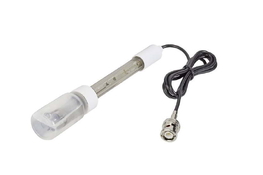I'd be very hesitant to connect specific color observations to the chemistry. Yes, there's a difference, and yes, the chemistry has
something to do with it. But especially when troubleshooting, what's most useful is to have a good baseline comparison that removes the influence of automatic color balancing in the digital part of the process. Fortunately,
@originalwinslow has supplied us with an excellent comparison in the form of a photograph of two negative strips. We can use this to do a crude/naive color balancing for the known-good strip, so we can see what the
objective difference is with the DIY-processed strip:
View attachment 402094
Note that the key difference really is in the blue/yellow channel. That effect is so dominant that there's very little basis to say anything really about other colors. After all, the blue cast in the DIY processed strip is so strong that all other hues can be assumed to be contaminated, resulting in shifts and reduced saturation. If you allow software to auto-color balance the bottom strip, what'll happen is that new color anomalies are introduced that are a side-effect of automatically correcting the dominant blue cast. If you're not aware of this, it's all too easy to believe that these side-effects are somehow due to the chemistry, even if they're just a digital artifact.
So let's be very careful in how we talk about what effect the DIY chemistry has had on color. The main thing we can state with confidence is that the DIY-processed film features a dramatically higher degree of yellow dye formation. If you look at the negative, it's also clear that both the magenta and cyan hues are lacking in the un-inverted negative, so it's to be expected that the reds and greens will be weak, while the blues are emphasized.
The reason why this is pertinent is because the blue-sensitive (yellow dye-forming) layer is at the top of the film, green/magenta is in the middle and red/cyan is at the bottom. For some reason, the developer has acted more strongly on the top layer than the underlying layers. This means that either the developer hasn't had sufficient time or opportunity to penetrate into the lower layers and/or to do its work there, but it has had sufficient time to act on the top layer.
Looking at
Kodak's C-41 troubleshooting chart, a few things come to mind:
* Insufficient color developer; e.g. a weighing error made when weighing out the CD-4.
@originalwinslow can you confirm that you did in fact use CD-4 and not CD-3? The latter is less active and will probably give distinct color shifts. You may also try to dissolve the CD-4 in water first as you proposed, although AFAIK there's no chemical difference with just dumping it into the mix directly. Yes, it does fizz; the CD-4 is acidic and the developer is alkaline.
* Developer is too weak overall. This doesn't easily happen if you start with dry chemistry unless you mistakenly add too much water - but that mistake is usually noticed early on. Another possible cause for anomalous activity is a pH that's off the mark. You mention a 10.05 pH, but how was this determined? In my experience, low-end pH meters are notoriously unreliable.
Finally, there's the possibility of something triggering excess yellow dye formation; i.e. dichroic fog. This can be in the domain of bleach or fixer contamination of the developer. However, this would explain only the excess density and not the lack of cyan and magenta, overall. So even if there's some kind of fogging issue going on, it's not the dominant factor.
By all means, some kind of mixing error in the developer or poor development process parameter control is the likely culprit.















